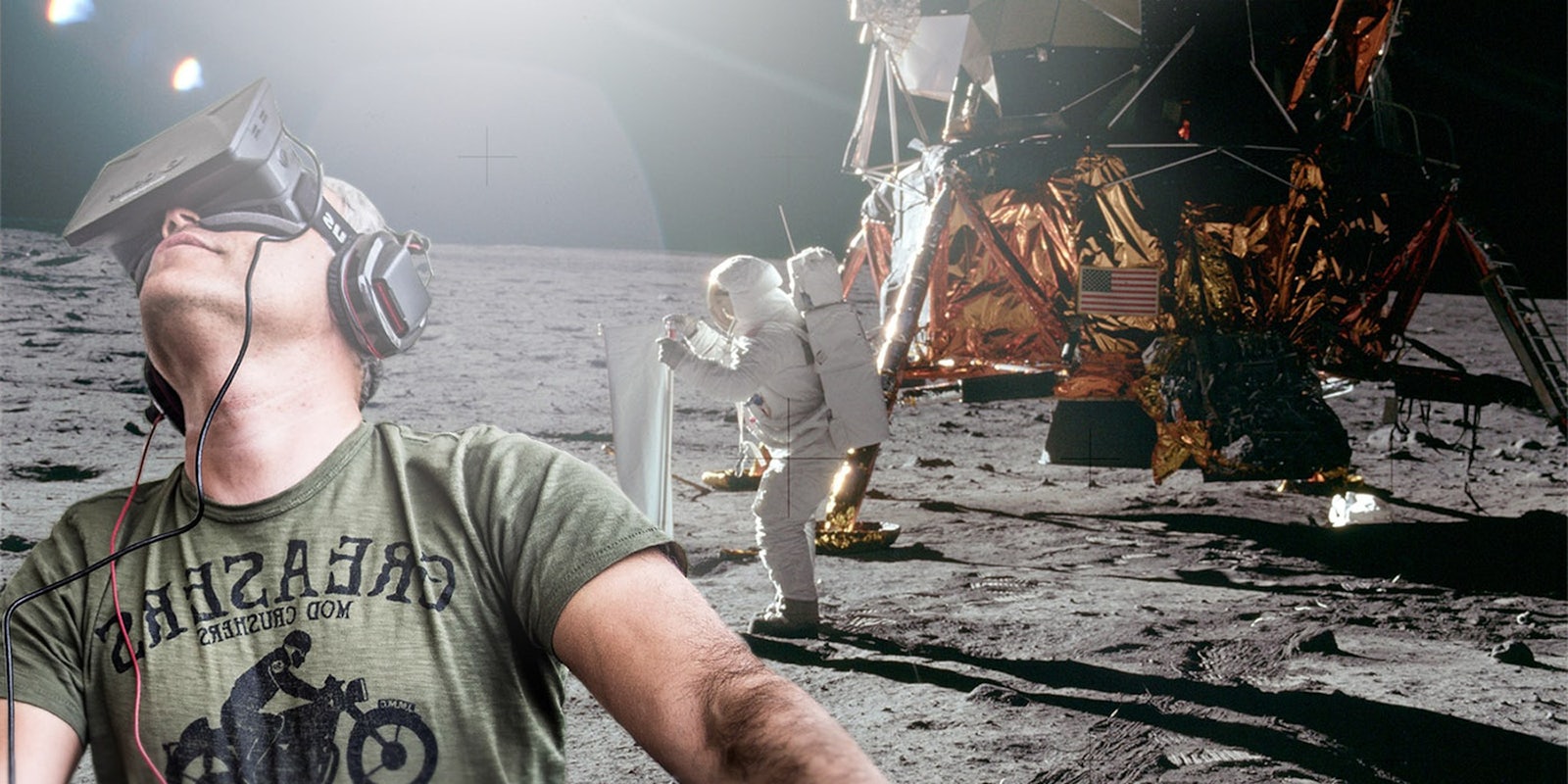A group of Pennsylvania scientists have developed an out-of-this-world use for the Oculus Rift virtual reality headset—controlling lunar rovers, allowing anyone to explore the Moon in real-time.
(There’ll be no more puns, I promise.)
The BBC reports that Carnegie Mellon University researchers are competing for a $30 million prize fund offered by Google to anyone who can send video footage back from the moon. Working with Astrobotic—a space firm affiliated with the University—the team is putting together a rover with dual-mounted cameras that will be controlled by the motion-sensitive Oculus Rift headset back on Earth.
In practise this means: If you look up, the robot looks up in real time. If you look around, the robot looks around. The operator is able to explore the surface on the moon in real time, without ever leaving the comfort of their home.
“Imagine the feeling of looking out and seeing rocks and craters billions of years old,” said team leader Daniel Shafir. “Turn your head to the right and you see the dark expanse of space. Turn your head to the left and you see home, Earth… We weren’t just going to go to the Moon. We are going to bring the Moon back.”
The team are working with Elon Musk’s SpaceX to launch the rover when it’s ready, with a planned launch date of 2015. In addition to the Carnegie Mellon effort, there are 17 other teams all competing to be the first to send video back from the moon and scoop themselves the multi-million dollar prize fund.
Long-term, the Carnegie Mellon team hopes to have “hundreds of robots on the Moon” reports the BBC, and that it could act as a learning aid in schools. It could “[allow] kids to experience what, to this date, has only been experienced by 12 human beings.”
It’s an exciting prospect—but even if they hit the 2015 deadline, it’ll be years until there’s enough rovers up there for everyone to have a go. For now, we’ll just have to stick to virtual reality porn instead.
H/T Popular Science | Photo via Nasa Goddard Space Center / Flickr (CC BY 2.0) | Photo via Sergey Galyonkin / Flickr (CC BY-SA 2.0) | Remix by Rob Price


